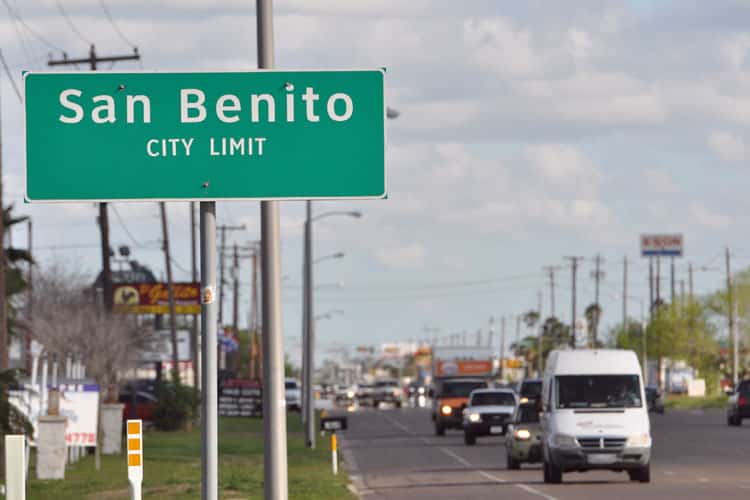SAN BENITO — After more than a decade of work and millions of borrowed dollars, city officials are falling short of a deadline in which to comply with a state order requiring they complete a sewer system overhaul by March 31.
At City Hall, officials have applied to the Texas Commission on Environmental Quality for a six-month extension to complete work on two remaining sewer lift stations, Mayor Rick Guerra said Wednesday.
“We’re asking for a couple of months more,” he said.
At TCEQ offices in Austin, officials will consider the request, spokeswoman Victoria Cann stated.
“The executive director may grant an extension to the Sanitary Sewer Overflow agreement upon a written and substantiated showing of good cause,” she stated. “Extensions are not effective until the respondent, in this case the city of San Benito, receives written approval from the TCEQ. Alternately, the city of San Benito may submit a new request to their TCEQ regional office and subsequently draft a revised plan which would be used to develop a new Sanitary Sewer Overflow agreement.”
TCEQ waiving big fines
One of the city’s biggest projects in decades dates back to 2012, when a previous administration entered into an agreement with the TCEQ, which waived severe fines in exchange for participation in its Sanitary Sewer Overflow Initiative program, requiring millions of dollars worth of upgrades to the city’s sewer system.
The project stems from nine sewage spills from 2009 to 2010 for which the state cited the city for discharging a total of 49,000 gallons near the banks of the Arroyo Colorado.
“A participating system will not be subject to formal enforcement by TCEQ for most continuing SSO violations as long as the overflows are addressed by the SSO plan,” the agency states on its website. “Participation allows the municipality to direct resources towards corrective actions rather than having to pay penalties associated with an enforcement order in addition to the corrective actions.”
Years of work, millions of dollars
In 2011, city officials launched the project, borrowing $7 million through the sale of certificates of obligation to replace clay sewer pipes laid in the 1930s and 1940s along with old manholes.
Since taking office in 2016, City Manager Manuel De La Rosa has been working to renovate six sewer lift stations while making other upgrades within a system made up of 40 lift stations, 465,000 feet of sewer lines and 1,300 manholes.
About five years ago, city commissioners borrowed $9 million through the sale of certificates of obligation to help fund the project.
Now, officials have completed the renovation of four of the six lift stations on TCEQ’s list, Guerra said.
At the tail end of the city’s work list, officials are building a $2.9 million surge tank at the city’s service center and a $1.2 million sewer lift station in the Landrum area.
So far, they’ve completed 40 to 50 percent of work on the two remaining projects, Guerra said.
Meanwhile, officials have worked to upgrade other lift stations, he said.
“There are other lift stations that needed repairs — rebuilding motors, electrical problems, buying generators in case of power outages,” he said.
Materials’ shortage prompts delay
The supply chain crisis has led to some delays, Guerra said.
The coronavirus pandemic’s production shutdown led to the supply chain crisis which has sparked materials’ shortages, he said.
“As far as equipment, we’re having trouble finding lines, pipes,” he said. “We have to wait maybe three to four months.”
It takes a whole team to move this and get these lift stations going, through the commission and the city workers, with a manpower shortage like almost every city has.
‘Big accomplishment’
At City Hall, officials are counting on the TCEQ granting the extension.
“We have started both of them,” Guerra said, referring to the two remaining projects.
Over a 12-year period, the entire sewer system overhaul has taken the work of two city administrations and millions dollars in borrowed money.
“It’s a big accomplishment,” Guerra said. “It takes a whole team to move this and get these lift stations going, through the commission and the city workers, with a manpower shortage like almost every city has.”





